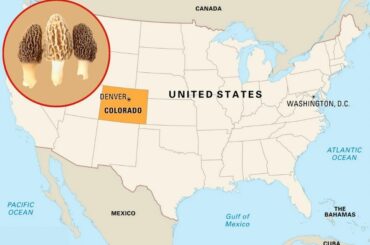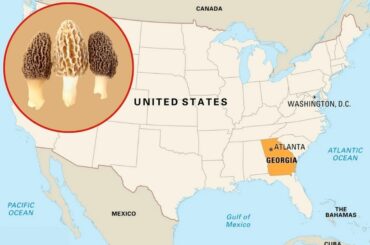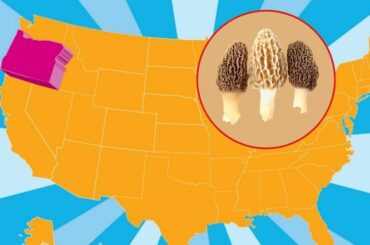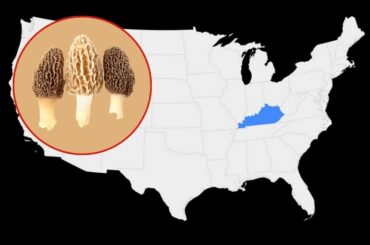Most people are unfamiliar with puffball mushrooms because they are not common in the market. They grow in the woods, and many people are afraid of them because of their size, shape, and the belief that they are dangerous.
Are puffball mushrooms dangerous? Most puffball mushrooms are not dangerous and are edible when they are young. You can actually eat young puffballs, either raw or cooked. But when the fungus matures, it will be inedible but not poisonous.
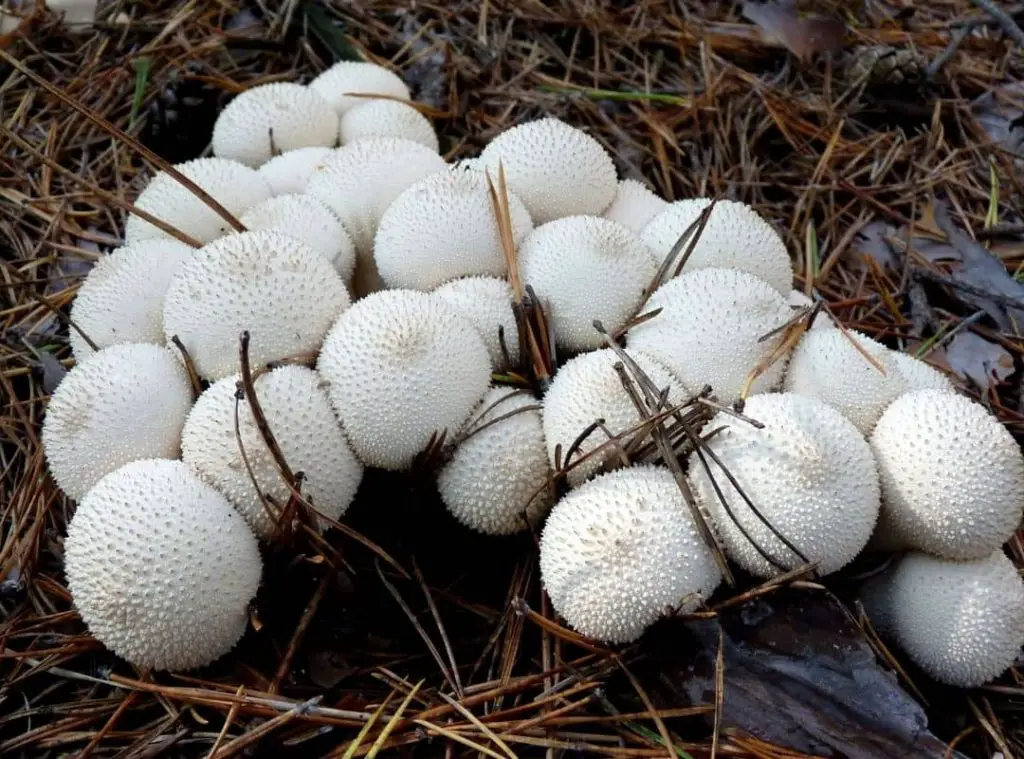
The issue with puffballs is that young puffballs look like poisonous mushrooms. This will cause most people to misidentify these deadly lookalikes as puffballs and get physically ill.
If you are talking about puffball mushroom spores, we must warn you because these can be dangerous. Still, they need to be inhaled in large amounts to harm your respiratory system. Fortunately, there are ways to identify true puffballs. Here, we will discuss puffball mushrooms and several facts about them.
What are puffball mushrooms?
A puffball mushroom is a fungus that looks like an egg-shaped sac or alien-like ball. It does not look like the usual type of mushroom because it doesn’t have visible stalks or stems. It also lacks the cap and gills present in most other mushrooms. Instead, puffballs have a round fruit body called gasterothecium.
A “puff” of brown spores comes out of the fruitbody when the mushroom is squeezed or stepped on. These spores look like dust and can be allergic to some people. Puffball mushrooms got their name because of this “puff.”
Puffball mushrooms belong to the Basidiomycota division and consist of several species that belong to several genera; Bovista, Calvatia, Calbovista, Handkea, Lycoperdon, and Scleroderma. Other than as food, puffballs were used to make ink in Tibet. In Rural America, common puffballs were used as a bee smoker to anesthetize honey bees. Later, this practice inspired the medicine industry and was used as an experimental anesthetic in surgeries.
Are puffball mushrooms toxic?
Puffball mushrooms are not toxic. In fact, young puffball mushrooms are edible. Although matured puffball mushrooms are inedible, they are not toxic either. However, there are some other mushrooms that look similar to young puffballs. These look-alikes are toxic, often fatal. These deadly mushrooms are the real issue. However, there will be no issue if you know how to recognize true puffballs.
Are puffball mushrooms dangerous to dogs?
Puffball mushroom spores, when inhaled, can be dangerous to both humans and dogs. The spores cause a respiratory disease called lycoperdonosis. This disease is rare because to get infected, a large number of puffball spores need to be inhaled. But, as the dog’s noses are more powerful and sensitive, it can be more dangerous to dogs. According to Wisconsin reports in 1997, five out of the eight teenagers who inhaled puffball spores required hospitalization, with two requiring intubation to help them breathe.
There are few reported cases of lycoperdonosis in dogs too. Some unfortunate dogs needed euthanization to release their pain, while some fortunate ones survived under medical care. So, if you live in a region where puffball mushrooms grow, you have to be careful with your dogs and monitor them all the time.
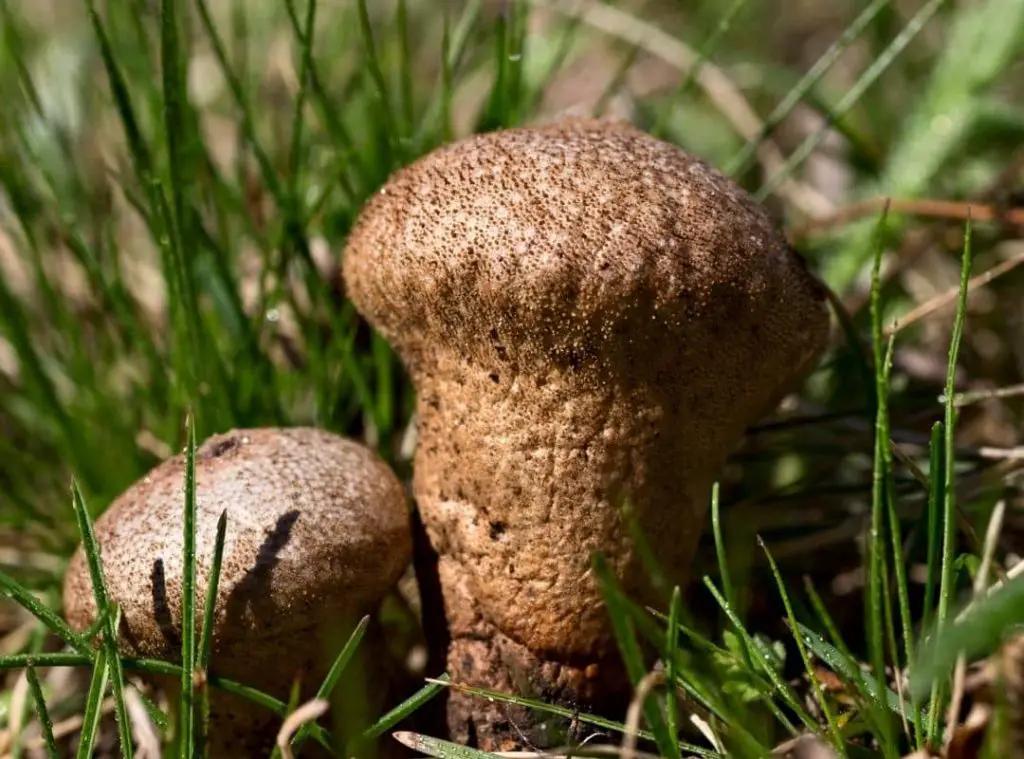
Is it safe to eat puffball mushrooms?
It is completely safe to eat YOUNG puffball mushrooms. They are available to buy at some local markets in the UK. But, you may not find them often in the markets. If you want to eat puffball mushrooms, you’ll have to go out in the wild and find them.
If you find a yellowish-brown puffball, then you are too late. It is no longer edible and can be dangerous if more matured puffball mushrooms are around them because the spore in large quantities is harmful. If you find only one or two, do them a favor, kick them out or squeeze them so that they can reproduce in the same area. Take note of this area in your mind as you may find fresh, edible puffball mushrooms a few days later.
How can you tell if a puffball mushroom is edible?
In short, edible puffball mushrooms should be solid white and have no gills. But, we know that a short explanation is not enough to identify edible puffballs. So, here is a detailed guide to pin down edible puffball mushrooms. After bringing your mushroom home, the first thing you should do is cut down one mushroom in half. Edible mushroom flesh is hard, thick, spongy, and solid white.
The mushroom shouldn’t have any gills or any coloration inside them. This includes usual mushroom colors of black, brown, yellow, and purple. Discard any mushrooms that have gills or any color inside the flesh. If the flesh inside is not white and has any coloration, that is not a true puffball mushroom and can be poisonous. If the puffball you bring home is brownish, soft, and has spores inside them, then they are too mature for you to eat.
Young puffballs are spherical and don’t have any gills or a cap. They are solid white in color, thick, spongy, and hard. If the center of the mushroom has turned yellow or brown, it has already begun to mature. At this time, you can not eat this puffball.
Which puffballs are poisonous?
Most puffball mushrooms are edible, but none of them are poisonous. While some puffballs have a stalk, these puffballs are not edible because the flesh is tough and woody in texture. One such puffball is a false shaggy mane mushroom. The poisonous ones are nasty look-a-likes. They are not true puffballs but look the same as young puffball mushrooms. To identify these look-alikes, you need to cut the mushroom in half. Most people confuse the below mushrooms as puffballs.
The Earthballs
Earth balls or pigskin poison puffball is a common fungus in the UK. It accounts for the second most mushroom poisoning in the UK because of its look that resembles puffball mushrooms. However, you can identify them most of the time because most Earthballs have purple or black flesh in the middle. But beware that some earth balls look exactly like true puffballs and have white flesh inside. But, the flesh is more solid to the touch and less spongy than puffballs. If you are not sure what you have found, throwing them away is the safer option.
The Amanitas
Amanitas is a genus of the fungus family agarics. These fungi grow from a white egg sac. These egg sacs look similar to puffball mushrooms from the outside. Most amanitas mushrooms are poisonous, and some are deadly and have no cure, such as death cap and destroying angel mushrooms.
Therefore, you must avoid eating these mushrooms to be safe. Fortunately, you can identify young Amanitas by cutting the mushroom in half. When it is cut in half, you will see a small mushroom ready to burst through the skin of the egg. If you see a small mushroom inside the puffball, discard it right away.
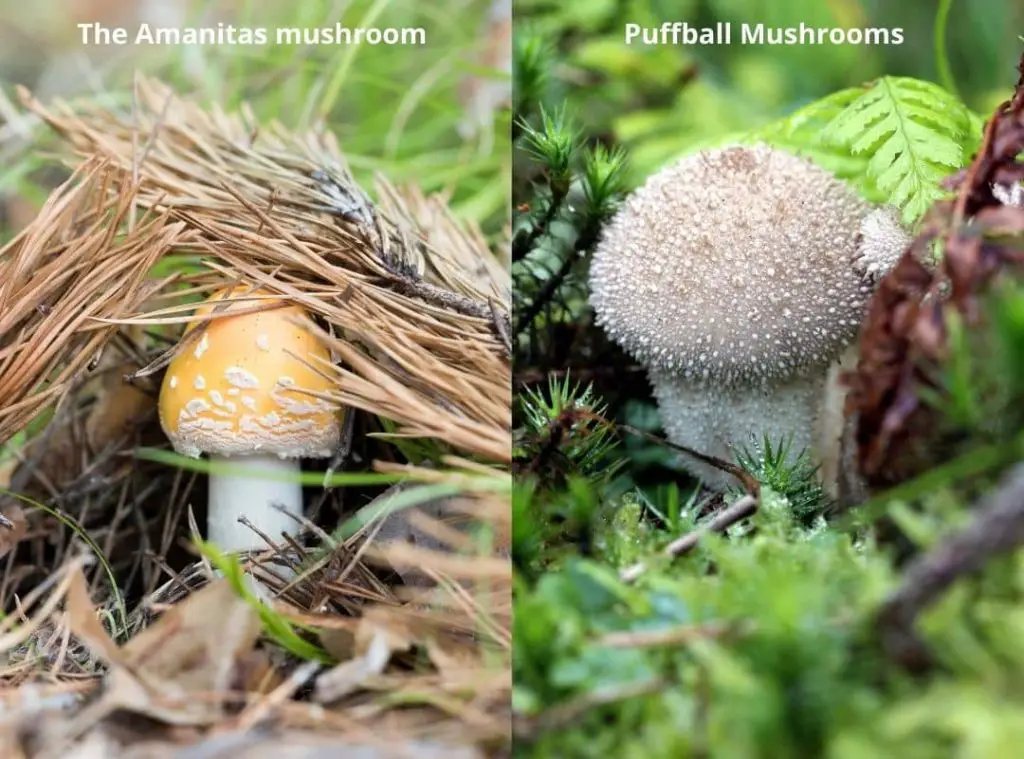
The Stinkhorn mushroom
This is another mushroom type that grows from a white egg sac. However, it is easily distinguished because of the gelatinous layer between the egg sac and the mushroom. Some of these mushrooms are often smelly and are actually edible. But, people avoid them because of their odd looks and smell.
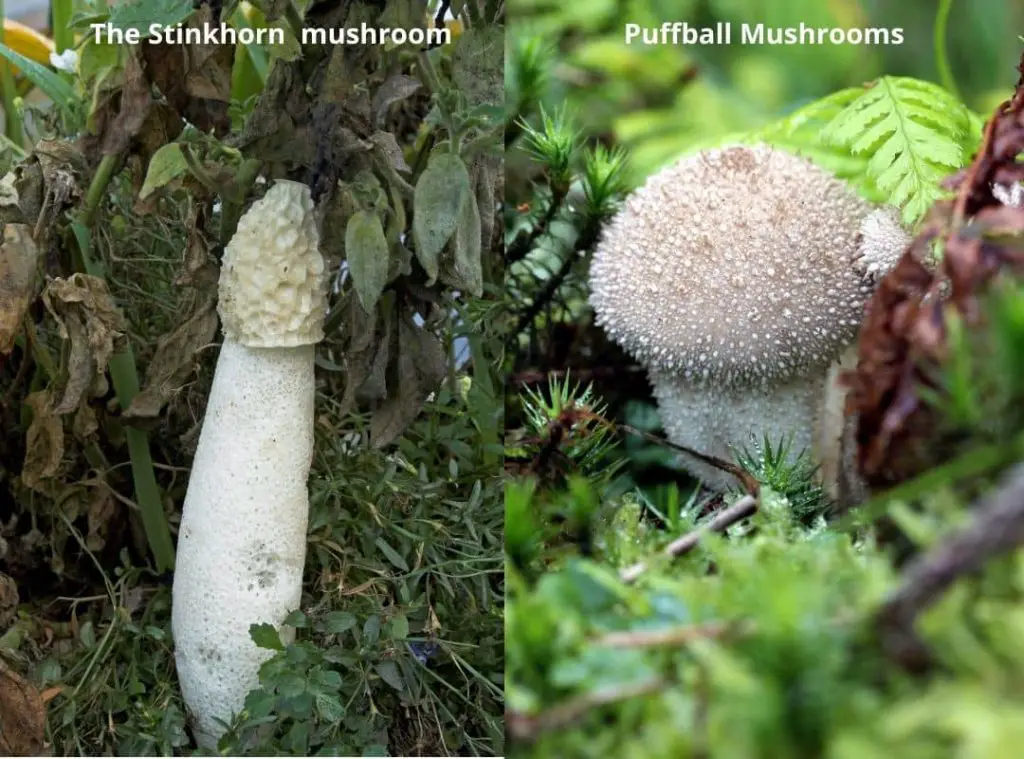
Puffball mushroom smoke
Puffball mushrooms do not have gills to contain spores. Instead, the spores form internally in a mass called gleba in the fruitbody.
When these spores mature, they will become yellowish-brown, and the fruitbody develops an aperture or dries and splits for the spores to escape. When the matured puffball mushroom is pressed by an animal or raindrops, these spores release like a “puff.” These clouds of spores are called puffball mushroom smoke, and they can be dangerous if inhaled in large quantities.
What happens if you breathe in puffball spores?
Nothing will happen if you breathe in spores of one or two puffball mushrooms. But, if you happen to breathe extreme amounts of puffball spores, you will have to suffer through a disease called lycoperdonosis.
Lycoperdonosis is a respiratory disease that causes inflammation of the lung’s alveoli. The symptoms of this disease include difficulty in breathing, cough, fever, nausea, rapid pulse, and crepitant rales. In severe cases, the patient will have to remove parts of the lung and will suffer from severe liver damage. However, cases of Lycoperdonosis are rare because many puffball mushrooms do not mature at a site. It is considered lucky for the mushroom if more than two puffballs mature in an area.
Where can you find puffballs?
Puffball mushrooms grow all over Europe and North America. Giant puffballs (Calvatia gigantea) are more common everywhere among all other puffballs. These mushrooms tend to grow on open meadows and fields. You will often find them in well-fertilized areas like golf courses and lawns.
You will occasionally find puffballs on the forest floor of deciduous forests. These mushrooms only grow on the ground. They never grow on logs or trees. If you see a mushroom growing on the wood, it is not a puffball mushroom.
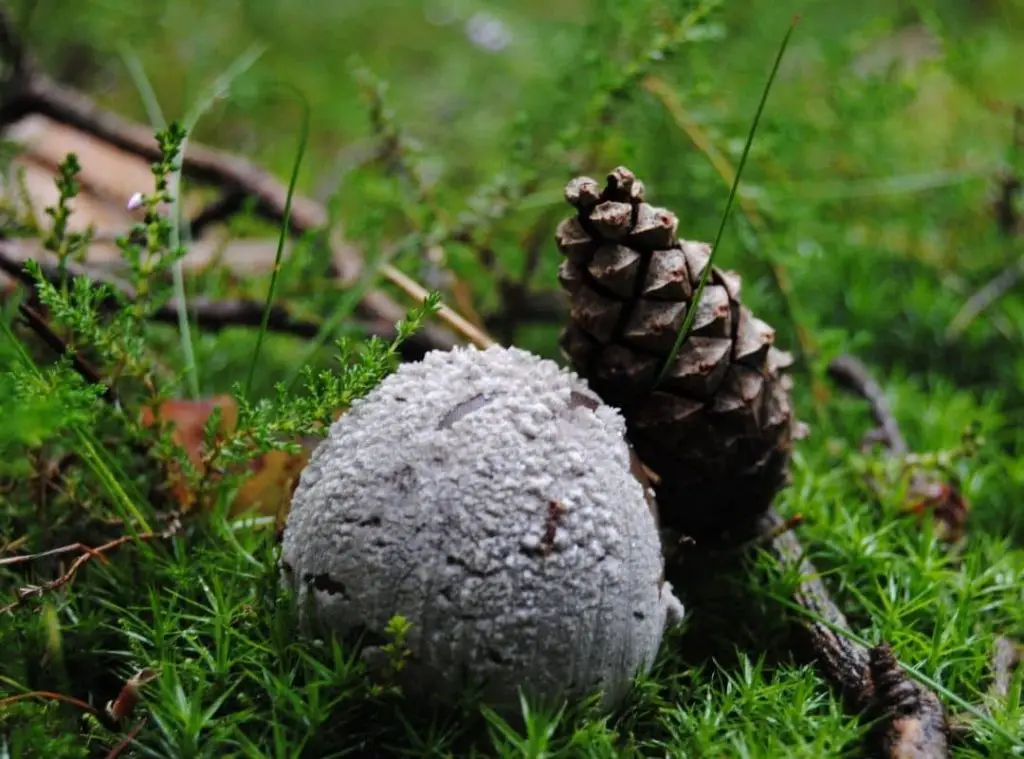
What time of year do puffballs grow?
Puffball mushrooms usually grow during the late summer and the early fall. They will grow from August until October, depending on the area they grow.
Are puffballs good for the soil?
Puffball mushrooms are an essential part of our environment because they help decomposition of the most rigid material in wood; Lignin. Therefore they are nicknamed a “decay fungus.” Without these decay fungus, nature will take an extremely long time to decay the fallen trees and organic matter. So, yes, puffballs are good for the soil.
FAQ
Are black puffball mushrooms poisonous?
Puffball mushrooms have to be white- white only, as we explained before. If the puffball you found is black in color, that is not a puffball and can be poisonous. Therefore, it is wise to throw away any black puffball mushroom you find.
Can you eat common puffball mushrooms?
Yes. Common puffball mushroom (Lycoperdon perlatum) is a common mushroom found all around Britain and Ireland. Since they are common, it is not difficult to identify these puffballs. They do not have a distinctive taste, but people use them for dishes with other mushrooms. However, you have to pick young common puffballs to be able to eat. Matured puffballs are less edible and can make you sick.
Conclusion Are puffball mushrooms dangerous?
Puffball mushrooms are not dangerous when they are young. Matured puffball mushrooms are not edible and can be dangerous because of the “puff” of spores. Although spores are not harmful in small amounts, they can make you severely ill when inhaled in large quantities. And also, if you pick deadly puffball look-alikes, then you are in trouble. Fortunately, there are ways to identify true puffballs so that you can be safe.
Also visit: http://www.examsnap.com
References
Alenghat T, Pillitteri CA, Bemis DA, et al. Lycoperdonosis in Two Dogs. Journal of Veterinary Diagnostic Investigation. 2010;22(6):1002-1005. doi:10.1177/104063871002200629
Rubensohn M. (2009). Inhalation pneumonitis in a dog from spores of puffball mushrooms. The Canadian veterinary journal = La revue veterinaire canadienne, 50(1), 93.

